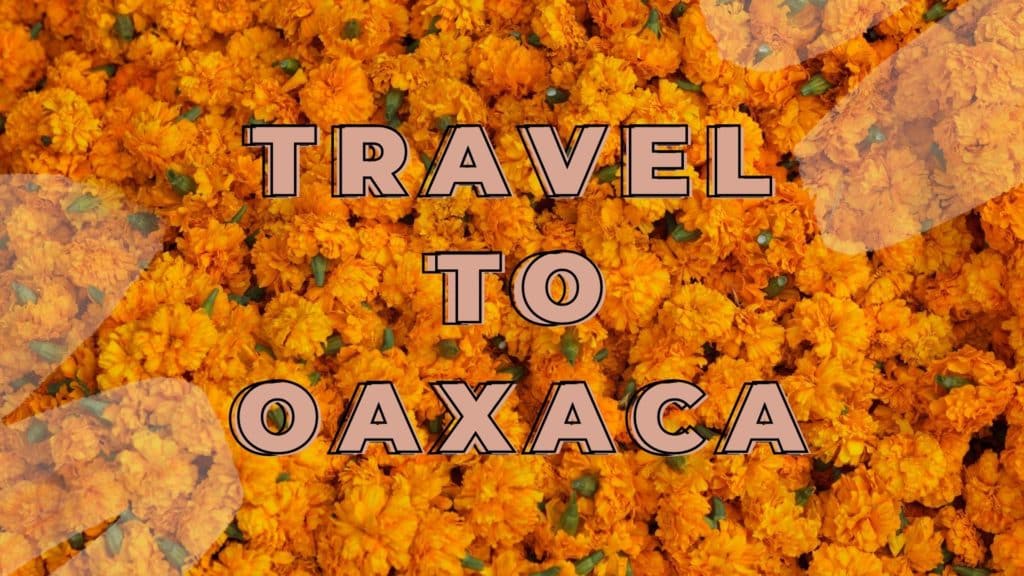We’ll always and forever love Mexican food because one bite speaks volumes. And while you don’t have a complete picture unless you dine everywhere from fine dining to street food stalls, we’re going to hone in on street food. Specifically, classic Mexican street tacos.
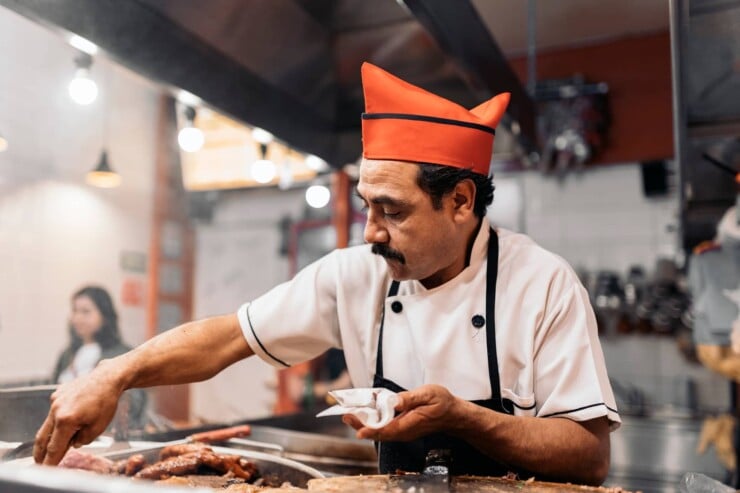
Mexico Has Some Of The Best Street Food
Eating at a street food stand gives you a lens into Mexican regional food specialties that have centuries (sometimes millennia!) worth of history. In fact, the food culture in Mexico City is so celebrated that it’s even been designated a UNESCO intangible heritage.
It’s almost impossible to eat your way through every street food stand in Mexico (though you can be sure we’re on a mission to do it!), but we’ve got a not-so-secret secret for you: Mexico City is like a one-stop-shop for Mexican street food. So let’s just focus on authentic tacos, shall we? And even more specifically on classic Mexican street tacos that turn to meat as their key ingredients.
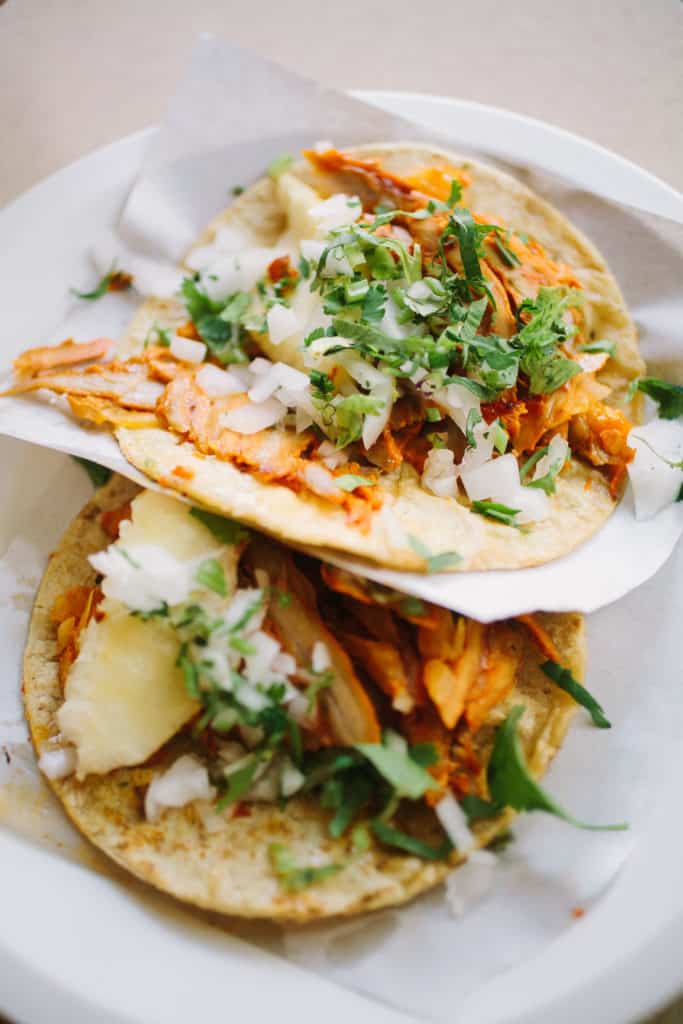
What is a classic Mexican street taco?
Before we proceed we should take a quick step back. As iconic as mariachi music, the taco is undoubtedly the best-known food export from Mexico.
And, before we get into the types of classic Mexican street tacos, let’s agree on what a taco is. As part of the family of Mexican foods known as antojitos and translating to “small cravings,” these are smaller bites of food that are traditionally eaten midday and served on the street. Many are based on the corn dough known as masa and can include anything from sopes and gorditas to enchiladas and tacos.
It’s widely accepted that food that is placed in a tortilla is a taco, and, yes, they usually have garnishes ranging from fresh lime juice and salsa to fresh herbs and diced onion.
What is the history of classic Mexican street tacos?
All that to say that the taco originated at taco restaurants–aka taquerias– and at street food stalls. The taquero can have skills akin to a renowned sushi chef wherein they can flip, toast, and fill a tortilla in a balletic manner all in the blink of an eye.
As for the history, it’s long and varied. It’s believed the concept of a taco came about as early as 1000 B.C. with the tortilla serving as an edible spoon of sorts. But in Mexico at the turn of the 20th century, classic Mexican street tacos were considered working-class food. As the love for Mexican food has gone global, so has the appreciation of the taco.
However, most Mexicans still consider it a small snack they eat between meals even if it often ends up being lunch or dinner.
8 Of Classic Mexican Street Tacos To Know
To be honest, there are so many details about classic Mexican street tacos that we could write a book about them. In fact, there is a legit taco encyclopedia and a whole Netflix show dedicated to the manner should you want to really dig into the matter.
The broad strokes are that the majority of meat-based tacos in Mexico are made with beef, pork, sheep, or goat and that pretty much every part–from head to hocks and everything in between–is used in one of the various taco preparations. While some like birria–vary based on region and personal preference.
While we adore chicken tacos, longaniza tacos, pork chop tacos, and suadero style, here we’re diving into the most common meat-based tacos. To start you off, here is a brief glossary of the more common types of classic Mexican street tacos you’ll encounter when you travel to Mexico:
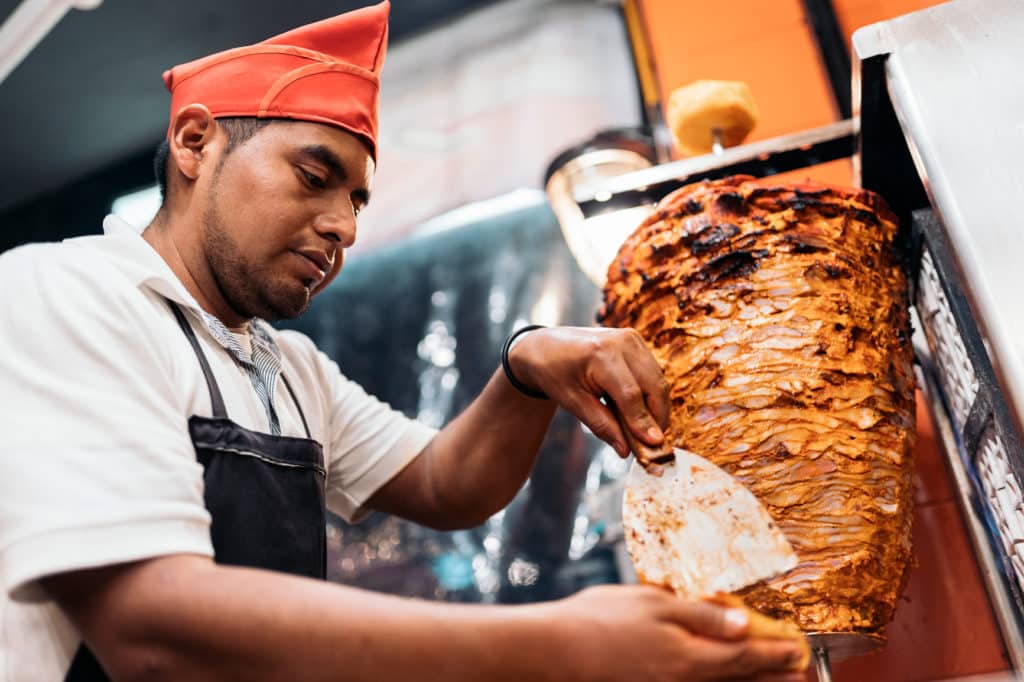
Al Pastor Tacos (aka Adobada)
Typically found in Mexico City and Puebla
Do you see that vertical spit turning and slow-roasting a huge chunk of pork? You’re at a classic Mexican street taco stand specializing in al pastor where meat is slow-cooked on a trompo (aka a spit).
Al pastor translates to “shepherd style,” in reference to the Lebanese immigrants who arrived in Mexico in the 1940s. They brought shawarma with them, and from that evolved the tacos árabes in Puebla (a dish where spit-roasted, seasoned lamb is served on a pita) and then eventually into al pastor.
Al pastor tacos are made by marinating meat (historically lamb but often pork nowadays) with Mexican-meets-Middle Eastern flavors like charred onions, garlic, achiote paste, cumin, cinnamon, allspice, and cloves. After the pork butt is marinated overnight, it’s layered onto the vertical spit and cooked for hours until the meat is tender, flame-licked, and caramelized.
How to know where to go for the best al pastor tacos? First of all, a legit al pastor joint only does al pastor and does it excellently. Most Mexicans say that the larger the trompo, the better the spot (the rationale being the amount of meat they cook is an indicator of demand at a given taco stand).
At classic spots like the historic Tacos El Huequito in Mexico City, the tacos are simply served shaved off the spit and rolled. The more “modern” garnish, which has been around for decades but is said to be a 100% Mexico City creation, is to top it with pineapple, cilantro, onion, and chipotle salsa.
Oh, and know that al pastor is major a nighttime taco since the trompo turns and cooks for hours before it’s ready (also because it’s a phenomenal cap to a night out on the town)!
Finally, in some parts of Mexico, like where we travel in Northern Baja California, there is adobada. While some claim this is merely the norteño name for al pastor tacos, others argue that the marinade of an adobada recipe can differ and that the meat is usually grilled and not cooked on a trompo.
Barbacoa Tacos
Typically found in Michoacán, Mexico City, Guanajuato, Hidalgo, and Querétaro
Each region of Mexico has its particular way of making barbacoa — the variations are endless, from the type of meat used and the type of condiments to the material used for wrapping the meat and even the baking or steaming process itself.
Traditionally in Mexico, barbacoa is made with lamb (though you’ll also see it made with beef or goat) that is wrapped meat in maguey (aka agave) leaves and then slow-roasted overnight in an underground oven lined with hot stones.
This dish is a street food staple on the weekends where, as early as 8 AM, you can get your hands on barbacoa as tacos or served with consommé – a soup made from the meat drippings and sometimes mixed with garbanzo beans and rice. FYI, in the States, barbacoa may also refer to beef prepared in the same way.
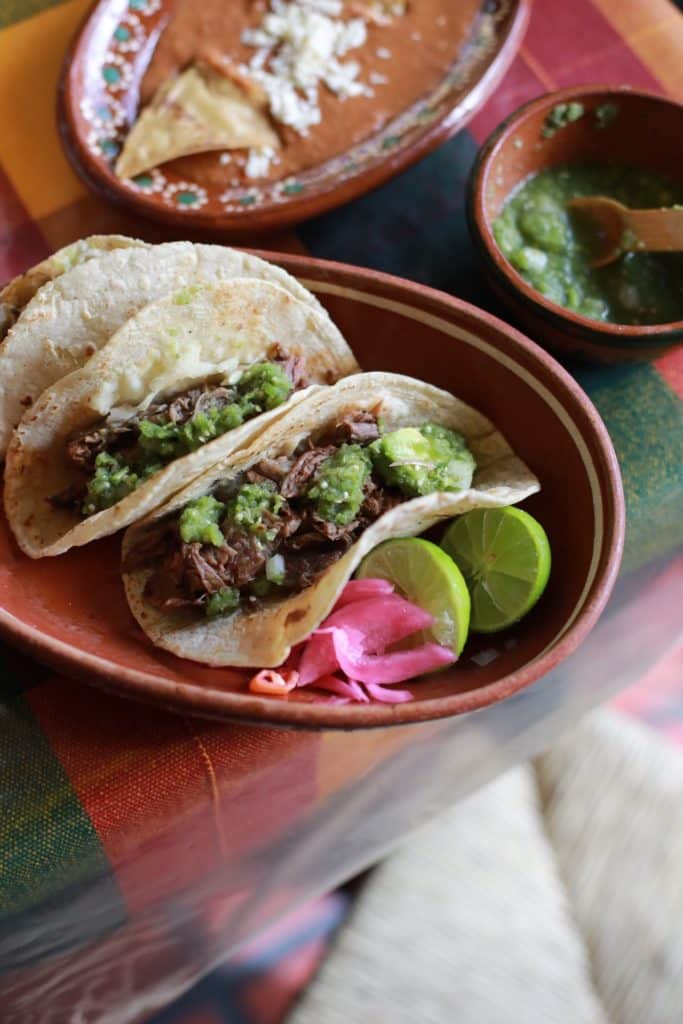
Birria Tacos
Typically found in Jalisco, Durango, Zacatecas, Aguascalientes, and Michoacán
Birria hails from the state of Jalisco and is an icon of the cultural identity of the Jalisciences (people of Jalisco), but birria came out of necessity. In the 16th century, the Spanish introduced goats to the region, the population quickly grew, and locals turned to goats for survival during a famine.
Birria can mean slightly different things depending on where you are and who’s cooking.
You may get a stew of deep red, spiced goat stew served with tortillas, condiments, and salsas.
Or you may be served meat (often goat, lamb, beef (known as birria de res), or chicken) marinated in a chile rub then slow cooked and stuffed into sauce-dipped tortillas topped with chopped onion, fresh limes, and cilantro, or shredded cabbage.
One thing’s for sure: birria (both the goat tacos and the stew) is known as a popular hangover cure, and maybe this is why this classic Mexican street taco is mostly eaten in the mornings and early afternoons.
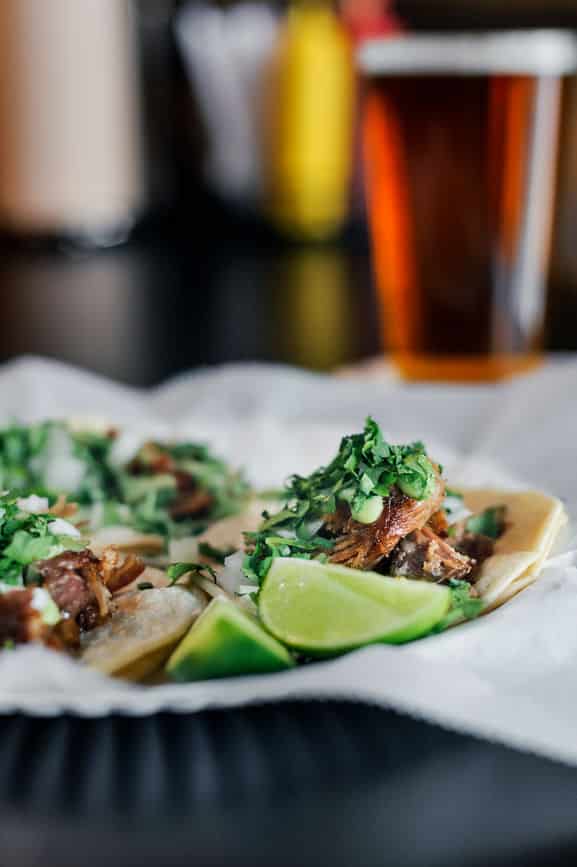
Carnitas Tacos
Typically found in Michoacán
Speaking of meat, there is arguably no classic Mexican street taco more about the meat than classic carnitas. And we have the Mexican state of Michoacan to thank for these oh-so-delicious pork tacos.
The name carnitas translates to “little bits of meat,” and pork is the star. To reach its most savory state, pork shoulder is slow-cooked in lard, then orange and garlic are added.
Once the shoulder is tender, the pork is chopped, crisped, (not usually shredded as you often find it stateside!), and served. Though even the name carnitas proves this taco is all about the meat, we believe the classic toppings of lots of lime and a good salsa make the dish!
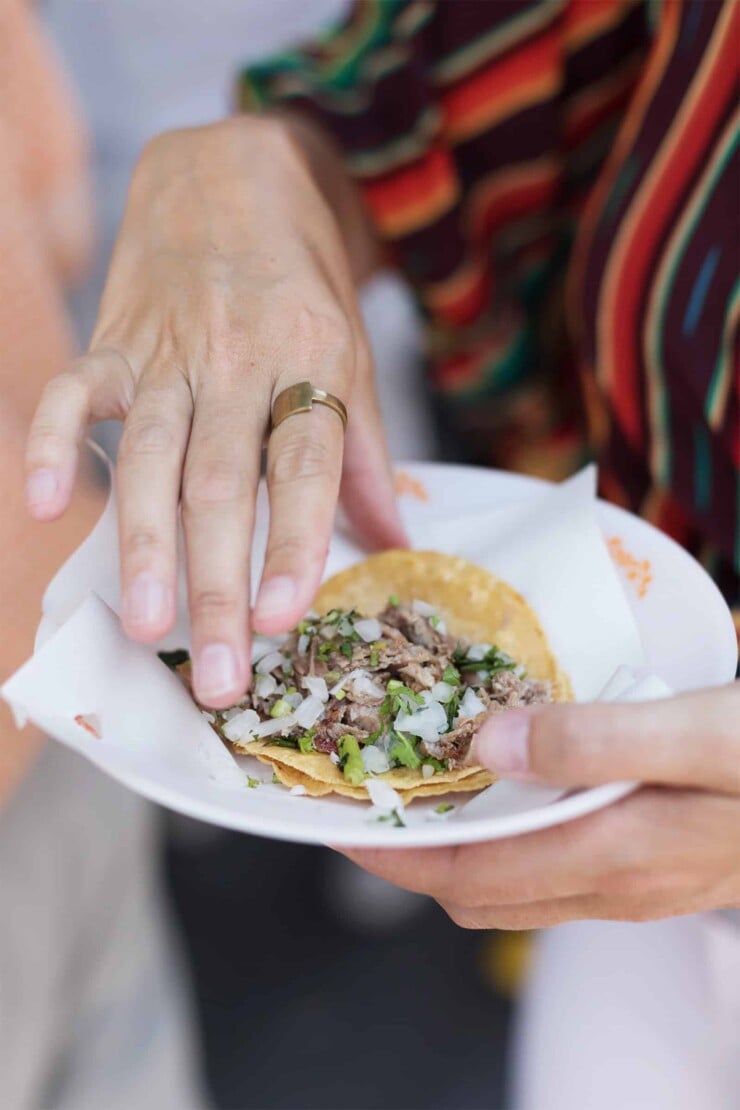
Carne Asada Street Tacos (aka Al Carbon)
Typically found in Sonora, Chihuahua, Coahuila, and Tamaulipas
For a quicker cooking meat preparation that doesn’t skimp on flavor, there is al carbon. The term al carbon refers to any sort of meat grilled over charcoal, resulting in a deep, smoky flavor.
Though you may think the grill is an essential piece of equipment in Mexican food, a metal grill didn’t exist in the area until the arrival of the Spanish. Charcoal-grilled tacos are said to have not shown up in Mexico City until the 1950s but now you find them throughout Mexico.
In Northern Mexico, the tacos are usually referred to by their “American-style” terms whereas the Mexico City grilled tacos are usually steak or rib tacos.
Arguably the most well-known al carbon preparation for those of us from the United States is carne asada though there is one key difference. Yes, carne asada (marinated and grilled meat, usually beef) is grilled over charcoal, but afterward, it’s chopped up and cooked on a flat-top grill before serving as classic Mexican street tacos.
The Northern Mexican state of Sonora has roots in raising cattle, so it’s only natural that it is the home of carne asada. You’ll find tacos served on flour tortillas in this region, though more on that below. And, as with almost all styles of grilled meat tacos, you’ll find them served with some combination of fried green onions, grilled nopales, slow-roasted chiles, and a mix of chile salsas.
We like to use skirt steak or flank steak to make our carne asada recipe but you’ll find various cuts depending on where you are.
It should be said that carne asada tacos are our favorite kind to have made as vampiro tacos (also sometimes called volcanes style) where the tortilla is toasted and topped with melted cheese before the meat is added.
Cochinita Pibil Taco
Typically found in Yucatán
A marinade of orange juice and achiote makes this slow-roasted pork juicy and tender, and it’s what to eat in Mexico when you’re in the Yucatán. Cochinita means baby pig, and pibil translated means buried.
And traditionally, the marinated pork is swaddled in banana leaves before roasting in an underground pit. You’ll find cochinita pibil served with pickled red onions, although a heads up for your clothes while eating; the achiote turns the meat bright orange.
The traditional way to make Yucatecan cochinita pibil is to bury a pig in a steaming, smoldering, stone-lined pit and cook it slowly for many hours.
The pork has first been marinated with a bright red paste of achiote seeds, garlic, spices, and bitter orange juice and then wrapped in banana leaves. This tender meat is pulled and served simply in its own juices with hot tortillas and pickled onion or as classic Mexican street tacos.
Tacos De Canasta
Typically found in Mexico City
Literally translated tacos de canasta are “basket tacos,” meaning these classic Mexican street tacos are arranged and piled into a basket for taqueros to sell on the go. The basket is covered with cloth and plastic, so the tacos keep warm and moist (tacos de canasta are also known as tacos al vapor or sudados in other parts of the country) until, if you’re lucky, cross paths with them.
These tacos come with various fillings, including beans, potatoes, and chicharron (pork skin). And reportedly, San Vicente Xiloxochitla in the state of Tlaxcala is the birthplace of tacos de canasta.
Tinga Tacos
Typically found in Puebla and Mexico City
Another Puebla specialty you’ll find in Mexico City is tinga or “stew” tacos. We’re talking meat (generally chicken or pork) that is slow-cooked in a combo of tomato, onion, garlic, chipotle, and a bit of brown sugar, or piloncillo. Top your Tinga tacos with chopped onion, cilantro, fresh lime, and cheese.
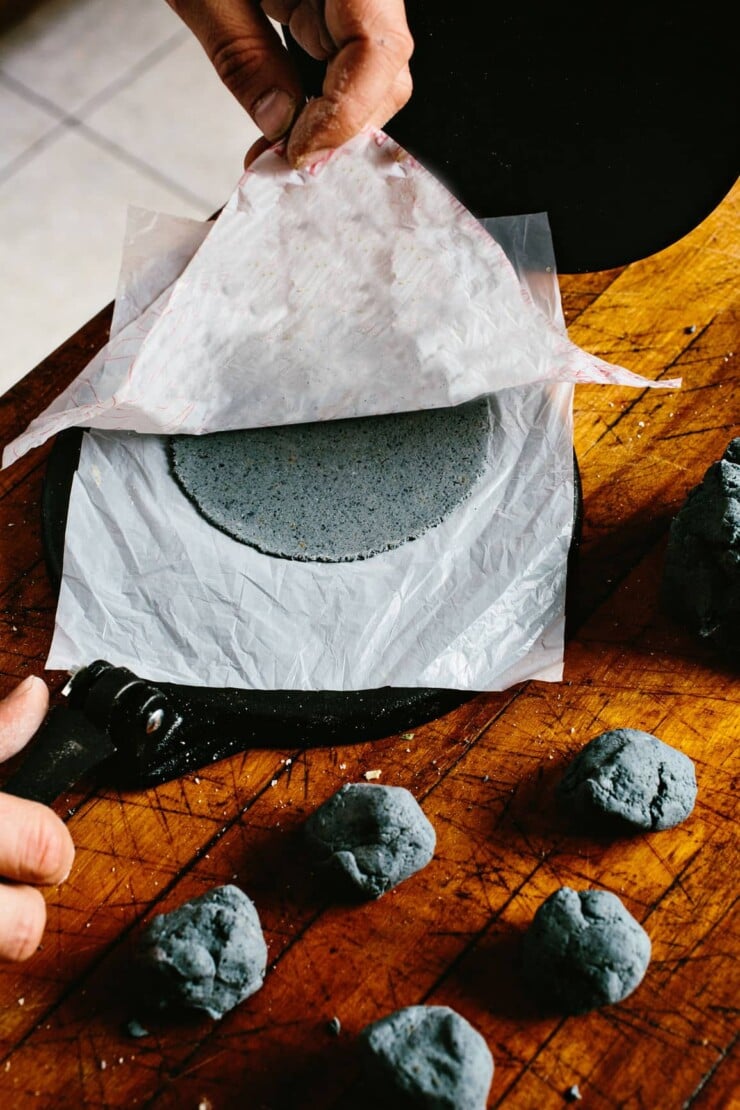
A Word On Tortillas
When it comes to tortillas, classic Mexican street tacos are usually made with corn tortillas. However, the northern regions tend to favor flour because corn was hard to grow in these parts of Mexico.
And if you’re wondering why corn tortillas don’t come any bigger than the variety of flour tortillas, it’s because of gluten. That is, since corn doesn’t have gluten, it can only get so big. So, unless you’re traveling through Mexico’s border states, corn tortillas are the way to go. If you want to dig even deeper into all things tortillas, we’ve got you covered!
Have Us Plan Your Mexico Trip
Did you know we’re also a boutique travel agency that specializes in Mexico travel planning? If you’re looking to plan one of the best trips to Mexico, our Mexico trip planner services are here to help you plan your perfect itinerary.
Photo Credit: Opening photo and man working trompo by Santi Nuñez; al pastor tacos by Christine Han; carnitas tacos by Cameron Whitman
